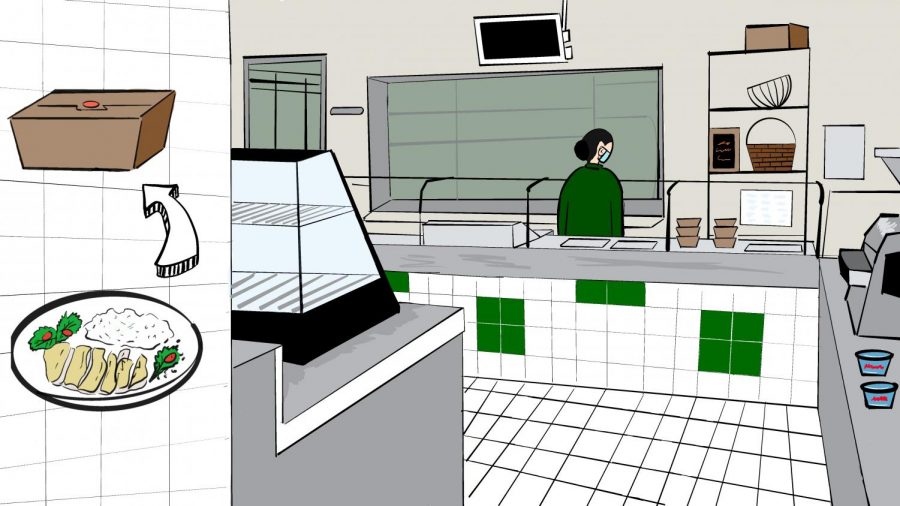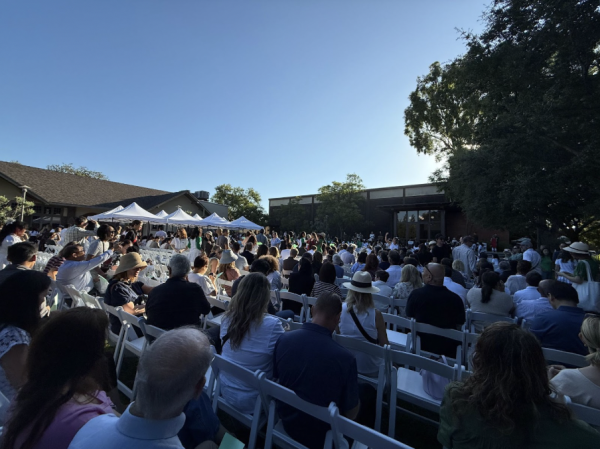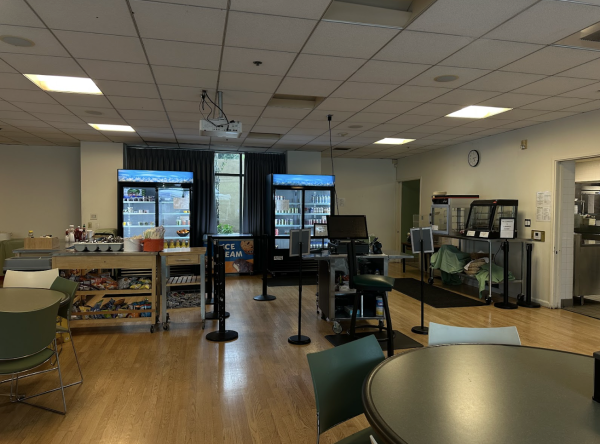Despite Challenging Changes to the Commons, More Meals Are Being Purchased Than Ever
When students returned to campus last year, the community was left without its popular cafeteria, the Commons. With COVID-19 still affecting Westridge and its community, Brandon Worell, the Director of Dining Services, has seen his normal ways of operating the meal place thrown out the window. “We’re actively changing,” he said. This year, as the school aims for normality again, the Commons has been forced to alter their previous system of making and distributing food to students and faculty. “[Despite the challenges,] I think the kitchen has really stepped up and we definitely exceeded my expectations,” Worell said.
Despite the community’s enthusiasm for the return of the Commons, diners have encountered increased prices, fewer options in the food, less variety, and smaller pre-packaged portions. There are no more after-school snacks, and students can’t sit inside the actual Commons with its familiar green tables. Although the basic sandwiches and salads that were on the menu previously are still offered, they are now pre-made and can no longer be customized. Choices have had to be streamlined. Before, diners could purchase a half sandwich or half meal portion, but all main items are the same portion size now. Hot lunch items like pizza, burgers, and hot dogs were also a standard option, but those are no longer being offered. The missing item drawing the most outrage and reaction? French fries. “I do want my fries back,” said Miranda F. ’25. Losing that fan-favorite food is just one of the many casualties of the Covid-responsive campus.
The Dining Services staff has been working hard to pivot to the protocol demands and restraints—expected and unexpected. Prior to Pandemic Times, the Commons was a bustling hub for the hungry hordes—it was arguably the most packed indoor space at Westridge. But this is a problem if you’re trying to keep students socially distanced and a different kind of problem if you’re trying to feed them.
Students can no longer crowd around tables or in the lunch line. Designated outdoor dining spaces have been set up around Ranney Court, the ARC Patio, Madeline Court, and Braun Patio to accommodate students and three different lunch services for each division. Lower School has an entire “Cafe Cart” set up on Ranney Court with breakfast and lunch items available for purchase. Twice a day, food items are transported from one side of campus to the other.
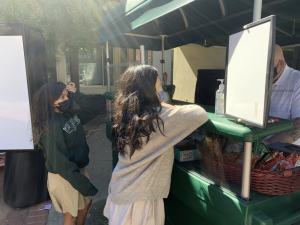
Because of the new division schedules, breakfast is finished around 7:30, later than before, which is when lunch prep starts. On some days, lunch service can start as early as 11:00. That’s only three and a half hours to prep and package over 300 meals. To make matters even more difficult, the Commons has been short-staffed. Usual operations include a team of six people, but they’re down to five, and some days they even have to work with four. With less time and less staff, serving meals became a more demanding task.
Millie Delgado, a staff member of Dining Service, talked about her experience working with fewer people. “It’s totally different from years before because everything is individually packaged, and you need a lot of work,” she explained. “Like for instance, in my situation, I have to work 10 hours a day. But yeah, it has been really hard in every single way.”
Efficiency has been key to dining services this year, which is part of the reason for the streamlined options. Pre-packaging food and fewer options have reduced crowding and sped up the line. Previously students might have to wait in line for 15 minutes before getting their food, but now, the entire upper school can get through the line in the same amount of time.
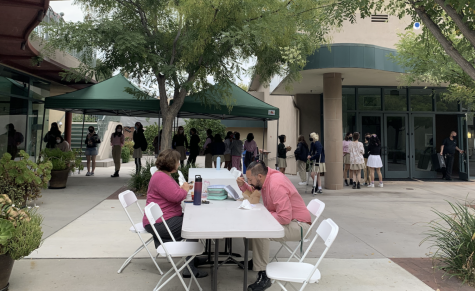
Despite all the changes, the number of people buying meals has skyrocketed. In previous years, the Commons used to sell about 250 meals on a slow day, which is nearly half of Westridge’s entire campus population. Now, on average, around 350-375 meals are sold and sometimes even 400—despite having less time and fewer resources to prepare.
The increase in prices hasn’t deterred diners from purchasing meals. The rising cost of meals is due to the increased cost in operations, an increase in the price of food, and inconsistent supply chain issues. For example, the supplier for the sushi option lost all its clients during the pandemic. Because Westridge’s orders are relatively small in comparison, it was no longer cost-effective for the provider to make the delivery. On more than one occasion, ingredient shortages have impacted the menu because Worrell just couldn’t find enough chicken to purchase.
Supply chain scarcity didn’t just impact recipes; it impacted menu planning. Many students have pointed out that in the first month of school, meals consisted mainly of rice and chicken. The reason, Worrell explained, had to do with preparation. Afraid they weren’t going to be able to prepare all the meals in time, the staff planned meals based on starches like rice or potatoes and chicken because they’re much easier to make in less time.

Some students have also mentioned that they felt the portions were smaller, but Brandon says that’s not true. “For the most part, our meal portions have actually gone up, by weight. Now visually when you look at something that’s on a 9-inch plate, and it’s spread apart it looks very big. You put something in a 4-inch box, it looks very small, but actually, by weight, we’re still doing it the same or more as far as portioning goes. And we’re adding vegetables to every single dish.”
In September, the Commons ran out of hot meals several times. “It’s been very difficult to gauge how much we make,” Worell said in regards to the issue. Estimating how much food will be purchased has also been tricky, and sometimes they’re caught off guard. Often, he cannot even purchase enough food. “We actually have a big problem with purchasing right now,” he explained. Despite all the mishaps, Worrell assures diners that they should look forward to getting some of their favorite meals back as the staff makes adjustments to diners’ needs and wants. “My priority is feeding students,” he said. Worrell is hopeful that as Covid restrictions ease, popular meals and snacks will return. Until then, students will have to adjust.

Ella is a senior and the Editor-in-Chief of Spyglass, now in her sixth year on staff; in the three years prior, Ella has served as Social Media Manager....




























![Dr. Zanita Kelly, Director of Lower and Middle School, pictured above, and the rest of Westridge Administration were instrumental to providing Westridge faculty and staff the support they needed after the Eaton fire. "[Teachers] are part of the community," said Dr. Kelly. "Just like our families and students."](https://westridgespyglass.org/wp-content/uploads/2025/03/dr.-kellyyy-1-e1748143600809.png)






















